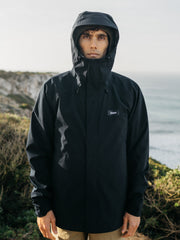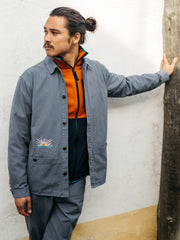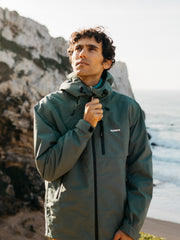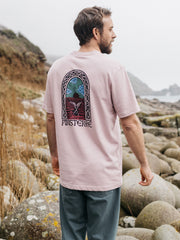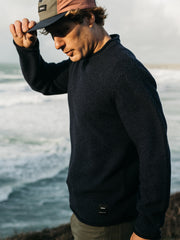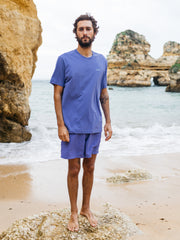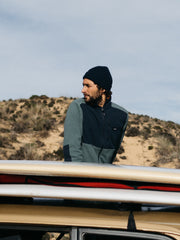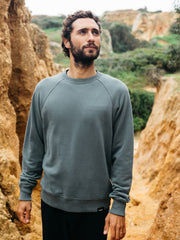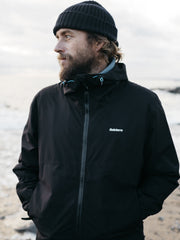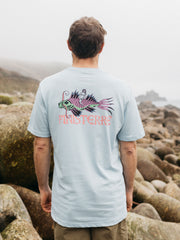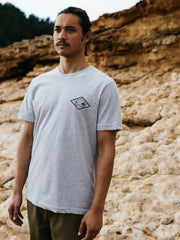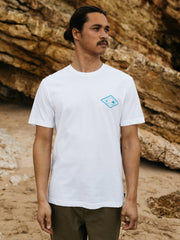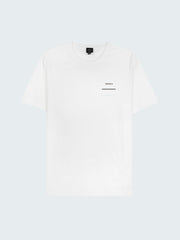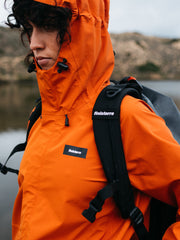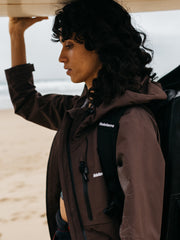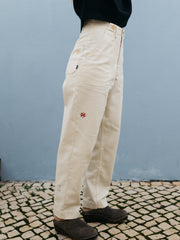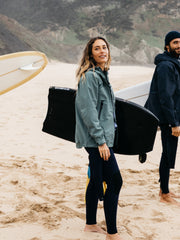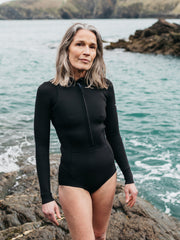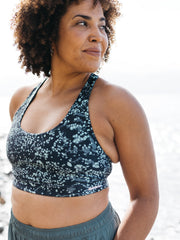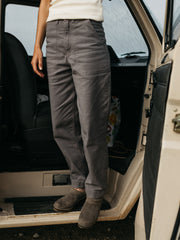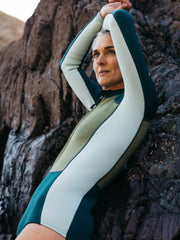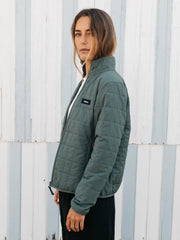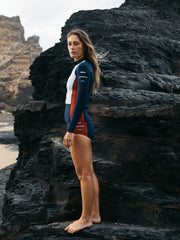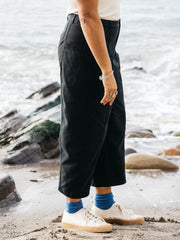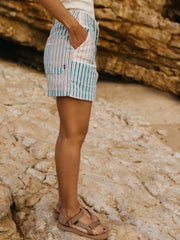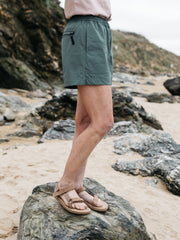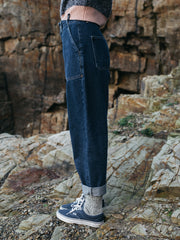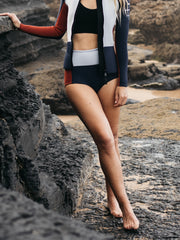Into The Sea: The Seasuit Project
03.06.20
4 min read
Written by Zak Rayment
Images by Abbi Hughes
Film by Here Now
Surfers in the UK and Ireland are fairly used to being fully clad in neoprene, especially when surfing through the winter. But back in 2010, on a trip to southern Iran, Finisterre Ambassador Easkey Britton found herself requiring similar head-to-toe coverage for very different reasons. And this is how the Seasuit Project was born.
“From day one, this has been about a collaboration between women, to take what they love to do – surfing – and make it easier for more women to do.”
- Easkey Britton, Finisterre Ambassador
Easkey was the first woman to surf in Baluchestan, a remote region to the south of the Iran. Due to the country’s strict laws on women covering up, she found herself in full wetsuit, boardshorts, rash vest and hijab, to ensure her head was covered. As most surfers would understand, the required clothing was extremely restrictive and incredibly hot, making it difficult to wear in the water.
Although she had found waves, and plenty of interest from local women, Easkey realised that if surfing were ever to take off for the women in the region – or in any other conservative country for that matter – one of the main barriers to participation was actually having the right clothing to enable them to access the sea, whilst still wearing culturally appropriate gear.
Wearing such restrictive clothing whilst surfing wasn’t just uncomfortable, it actually posed potential safety risks. Not only was it stiflingly hot, leading to potential overheating, Easkey found wearing a traditional hijab in the surf difficult – the fabric becoming very heavy when wet and getting easily tangled up when duck-diving or wiping out, creating a safety hazard. There were some hijabs available that were designed for sport, but nothing that dealt with the specific challenges that come with surfing.
For the design team at Finisterre, this posed the perfect challenge.
“Easkey came home telling us what an amazing experience she had in Iran and that there was a growing interest to do this activity, but that there was a barrier,” explains Finisterre’s Product Director, Debbie Luffman. “It was the perfect design problem. Not only was it a functional problem, but the clothing was actually stopping you from doing or enjoying the activity you wanted to do.
Whilst searching for more suitable alternatives, Easkey was introduced to Shirin Gerami, Iran’s first female Triathlete, who had fought (and won) her own battle to be allowed to compete under her nation’s flag. The barriers she faced were also linked to sourcing appropriate clothing, and she gladly lent her experience to collaborate with Easkey on both the functional and cultural requirements of the suit. "I am a huge believer that there is absolutely no barrier to sports participation. I think it's medicine in so many ways,” says Shirin. "The suit to me represents inclusion. I think it can have an absolutely huge impact and be a door opener to women, especially girls, to be able to gain the approval, blessing and the personal confidence to be able to go into the ocean and surf, have fun and be a part of this movement."
Armed with a solid brief, the challenge was issued to students at nearby Falmouth University and Plymouth College of Art. Whilst the design needed to conform to rules surrounding body modesty, a key part of the brief was also that the suit look good and celebrate individuality, “We told the students this was a function problem, and a sustainability challenge, but that they also had to consider aesthetics. Because when you are wearing sportswear, you have to feel strong and confident.”
Throughout the project the design team were enthusiastically supported by members of our local community to bring the Seasuit to life. Synne Knutson from Falmouth University designed the initial pattern for the Seasuit, which was then further developed by Finisterre designer Rachel Preston into the first prototype – continually testing the garment as she progressed with the project. The printed pattern was developed by Ayesha King from Plymouth College of Art developed a print inspired by the movement of water, creating a visual illusion that masks the contours of the body.
The final design has an innovative cross-back strap system, making it easy for the wearer to step into and pull on over a wetsuit or leggings. It also features an adjustable elasticated hood that would stay put when duck diving or during a wipe-out, and is made from quick drying UPF 50+ ECONYL® recycled fabric. The final tester suits were built by Makers HQ in Plymouth, a Community Interest Company who created bespoke garments in their sampling studio.
Image by Yehya Al-Hafid
Image by Amanda Prifti
Having worked with both our local and global communities to create and test the first prototypes, The Seasuit is now in production, ready to be launched later in spring 2022. From it's origins as a surfwear solution, the product has evolved into something that can help many kinds of women with different needs to access the water. Whether their barrier is cultural, medical or personal, the goal is the same as it ever was; providing greater access to the sea for women.
As a brand, we believe the sea is a place that offers freedom. But for some, the lack of appropriate clothing means that they don’t even have the freedom to experience it. Our hope is that the Seasuit will grant that freedom, giving access to a whole new community who can begin to build a relationship with our oceans; whether that is on a remote beach in southern Iran, or our own home shores in the UK.


